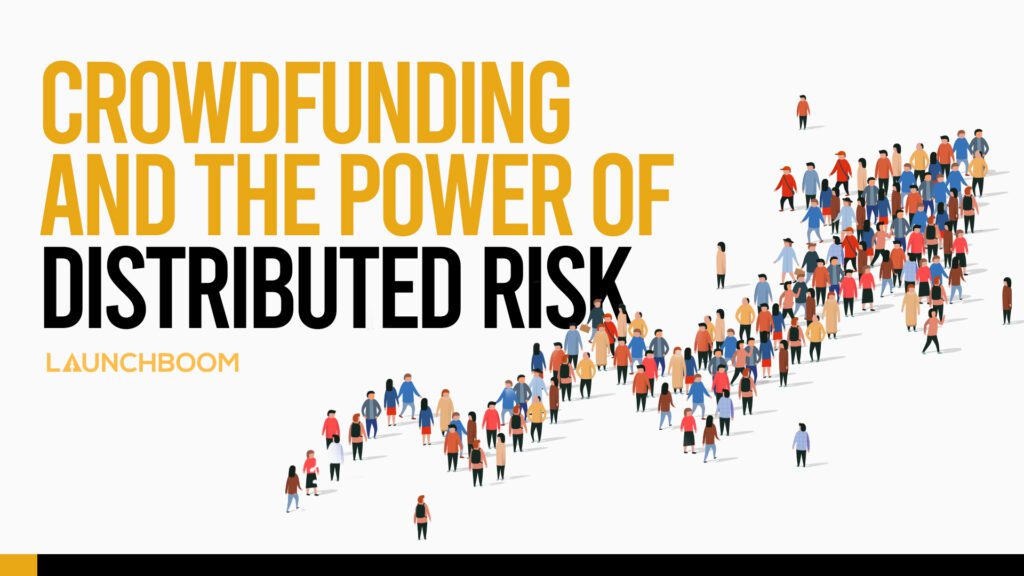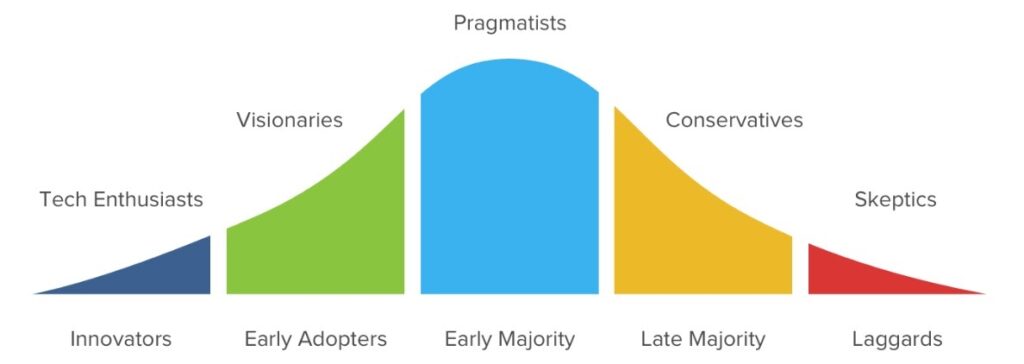
Life is a game of calculated risk.
Think about it. From deciding what you should eat to deciding if you should spend the next few years of your life launching a product, you are risking something with every decision you make. That risk could be time, money, health, reputation, and more. But at the end of the day, we all constantly evaluate whether our rewards will outweigh our risks.
Entrepreneurs classically have a higher risk tolerance than the rest of the population. It makes sense. Entrepreneurs are creating a business from nothing. And a business is a complex machine that requires someone to risk a lot to bring it to life.
Now, I’ve seen too many entrepreneurs revel in the risk they take. It’s part of their identity – thrust forth by an ego dangerously too large. But eventually, every entrepreneur will learn that success is not correlated to taking on more risk, but reducing risk without sacrificing their upside.
Since 2015, I’ve spoken with a lot of entrepreneurs interested in crowdfunding. One of their first questions to me is always the same: “Why should I crowdfund?”
Well, my answer is always the same: “Crowdfunding greatly reduces your risk as an entrepreneur.”
The reason why is because of what I like to call “distributed risk” – a concept where instead of the risk being isolated to the entrepreneur, it is shared amongst many people. The best part is… this distribution of risk does not decrease the reward. In fact, it makes the reward greater. To illustrate this, let’s take a look at how you’d launch a consumer product before crowdfunding.
Contents
The old, risky way to launch a product
Let’s go back to before 2007 (when crowdfunding became legitimate with the launch of Indiegogo). During this pre-crowdfunding time, let’s say you wanted to launch a consumer product. Here’s how it’d look:
- Create your prototype: you design your product and work with an engineer to create your initial prototype.
- Build your marketing materials: you create your messaging, capture photography, shoot video, build your eCommerce website, etc.
- Manufacture your product inventory: you work with a manufacturer to order your first inventory run and store that inventory somewhere in anticipation of launching.
- Launch your product: you spend a bunch of money on ads trying to get people to buy your product.
- Continue or fail: you either successfully sell through your inventory or you call it a loss.
During every step of this process, your risk is increasing – spending more and more time and money to get your product off the ground. There is no guarantee that the resources you are risking will actually pay off. In fact, with most companies failing in the first year, the odds are greatly against you.
Step three, where you have to manufacture your product inventory, is what I like to call the “point of no return.” The minimum order quantity (MOQ) from the manufacturer is typically quite high. This translates to you spending a lot of money to get that inventory. You may have savings to fund this or you may seek outside capital from friends and family. Whether self-funded or not, the result is the same: you have to risk a lot of capital before you even sell one product. And once you spend tens of thousands of dollars on inventory, you’re really committed. And with that commitment comes, you guessed it, a lot of risk.
Good news for you… there is another way.
Crowdfunding reduces your risk through distribution
Now, let’s look at this same situation, but instead, you use crowdfunding to launch your consumer product. Here’s how it’d look:
- Create your prototype: you design your product and work with an engineer to create your initial prototype.
- Build your marketing materials: you create your messaging, capture photography, shoot video, and build your pre-launch website.
- Build a pre-launch email list: you advertise on Facebook and build an email list of people who are 30x more likely to buy your product.
- Pre-sell your product through crowdfunding: you launch on a crowdfunding website and pre-sell your product before you manufacture it.
- Manufacture your product inventory: you work with a manufacturer to order your inventory using the funds you raised through crowdfunding.
Steps one and two are essentially the same with crowdfunding. You still have to create your prototype and build your marketing materials. Step three is where it all changes. Instead of committing to the “point of no return” and purchasing inventory in anticipation of a launch, you pre-sell your product through crowdfunding. All you need is a single prototype to create all of your marketing assets and launch on a crowdfunding platform.
In both models, the end goal is the same: to successfully launch your product. Where they differ most is in what you will lose if you fail. In the old model, your maximum loss is the time and money spent on product development, manufacturing, and marketing costs. In the crowdfunding model, your maximum loss is the time and money spent on product development and marketing costs. By removing the need to spend a great deal of money on manufacturing before you launch, you’ve successfully mitigated a large amount of risk without reducing your reward.
The Product Adoption Curve & why you must understand it
If you’ve never seen the Product Adoption Curve, it’s important to understand. This curve represents the different groups of people that adopt new technology — with the middle group being the mass market.

Crowdfunding backers are in the Innovators & Early Adopters categories. These are the people who are willing to take more risk with the products they buy. That’s because they are largely motivated to be the first to know about something. We all have those friends who knew about that new popular thing “before it was popular” – well, that friend is like your crowdfunding backers.
These are the people you are going to pre-sell your product to. And it’s this act of pre-selling that makes all the difference. The old model requires the risk to be concentrated on you, the entrepreneur. Using this new model of crowdfunding, the risk is distributed amongst your backers (the people who pre-purchase your product). In return for their risk, they receive a discount on your product and receive it before anyone else.
How crowdfunding increases your reward
Like I said at the beginning, crowdfunding not only decreases your risk, but increases your reward. Let’s dive into why.
You build a community of people who are invested in your success
With crowdfunding, you are building a community, not just a customer base. A community is a group of people who have shared goals and a feeling of fellowship. Your backers have shared the risk with you. In doing so, they become financially invested in the success of your business because they want to receive the product they bought.
A community is much more engaged and will support you in creating the best product possible. They can be leveraged to spread the word, support future launches, and, most importantly, give feedback on your product. This last reason brings me to my next point.
You get feedback and iterate on your product before you manufacture it
A principle of good product management is to focus on engaging with the customer early and often. You want to create a consistent and iterative feedback loop. Why? Well, I think Eric Ries, the author of The Lean Startup, puts it best: “the only way to win is to learn faster than anyone else.”
In the software world, this is much easier. You can release a version, get feedback, make changes, push out a new version, and repeat the cycle. In the hardware world, you don’t have this luxury. But crowdfunding allows you to treat your hardware product more like a software product.
Since you can launch with only a prototype, you can still make changes to your product before you manufacture it. Crowdfunding creators who are most successful understand that they can use their crowdfunding backers as a new type of focus group. Take the opportunity to engage with your community and get feedback on your product before you actually create it.
For example, a backer might suggest a certain change to your product to make it more useful. You realize that the request they are making is easy for you to add to the design. You make the change before you manufacture it. Here’s a more simple, but very common example: You are deciding between three colors for your product and aren’t sure what will be most popular. So you simply ask your community which color they like the best, and you have your answer.
Before crowdfunding, getting this type of data from customers before you launched your product wasn’t possible because you had to commit to the risk of manufacturing before you sold it. The opinion of your customer trumps the opinion of everyone else. Use it.
You raise capital more easily
If you’ve ever tried to raise capital, whether through equity or debt, it’s not easy. It’s especially not easy if you have no revenue or customers. With crowdfunding, you generate real revenue from real customers before you even manufacture your product!
Remember, life is a game of calculated risk. The person that you are asking money from wants to de-risk their investment as much as possible. With a successful crowdfunding campaign, you have a much stronger story to tell. A story that proves that people actually want your product. A story that proves that you are a much less risky investment than if you went the traditional route for launching your product.
Where do you start?
Understanding the power of distributed risk from crowdfunding is empowering for an entrepreneur. Now you have a much less risky path to try to bring your idea to life. A path that the smartest consumer product entrepreneurs are using to mitigate their risk and increase their reward.
Even though crowdfunding is less risky than traditional product launches, there is still risk. But as an entrepreneur, there will always be risk. If there wasn’t any risk, I don’t think it’d be as rewarding and, honestly, fun!
With the dramatic increase in online shopping due to COVID-19, there has never been a better time to launch a crowdfunding campaign. I recommend diving into the loads of content on crowdfunding on our blog, watch our webinars, or better yet, check out my book CROWDFUNDED on Amazon. Today, there exists a vibrant and supportive community of crowdfunders who are ready to help you.
All you have to do is start.




